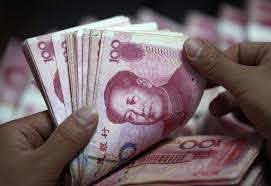SHANGHAI (Reuters): China’s yuan held near a 29-month high against the dollar on Wednesday as the U.S. currency remained under broad pressure and after the central
bank set a stronger midpoint.
The yuan finished the local session at its highest since June 26, 2018 on Tuesday, despite dollar buying by major state-owned banks in what some traders suspected was an effort to slow the Chinese currency’s advance on the 6.5-per-dollar level. Traders said the coronavirus outbreak and vaccine progress remained in focus for market participants and expect yuan strength to continue for now.
The dollar index against a basket of major currencies held steady at 92.436, after falling to a one-week low on Tuesday. The outlook for the currency remains downbeat with the Federal Reserve and U.S. Congress poised to do more to ease COVID-19’s economic damage.
“Generally we are optimistic about yuan’s further appreciation on the back of dollar weakness due to Fed’s easing,” said a trader at a Chinese bank. Prior to market open, the People’s Bank of China set the midpoint rate at 6.5593 per dollar, 169 firmer than the previous fix of 6.5762, and the strongest since June 27,
2018.
The spot market opened at 6.5540 per dollar and was changing hands at 6.5538 at midday, 37 pips are firmer than the previous late session close. “China’s capital outflows would decrease substantially as it’s difficult now for Chinese tourists to travel aboard amid the second COVID-19 wave globally, providing some support for the country’s currency,” said Bruce Yam, forex strategist at brokerage Everbright Sun Hung Kai in Hong Kong.
“Besides, the forming of China-backed RCEP, which still has a long way to go, would also bolster yuan,” he said. Fifteen Asia-Pacific economies signed what could become the world’s largest free trade agreement on Sunday, covering nearly a third of the global population and about 30 percent of its gross domestic product.
The global dollar index fell to 92.422 from the previous close of 92.433. The offshore yuan was trading at 6.5512 per dollar. Offshore one-year non-deliverable forwards contracts (NDFs), considered the best available proxy for forward-looking market expectations of the yuan’s value, traded at 6.721, -2.41 percent away from the midpoint.
One-year NDFs are settled against the midpoint, not the spot
rate.
